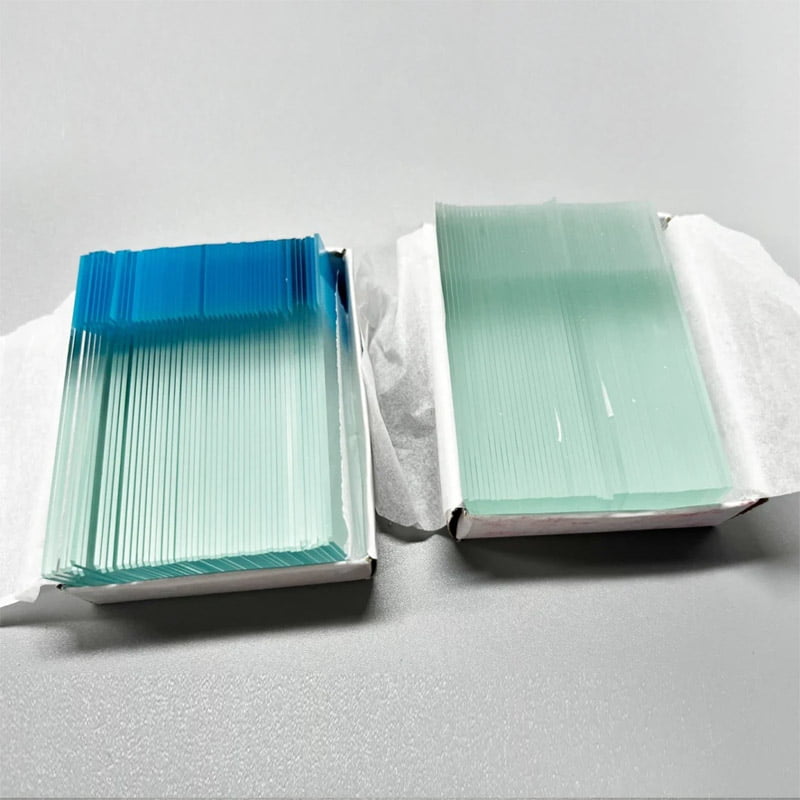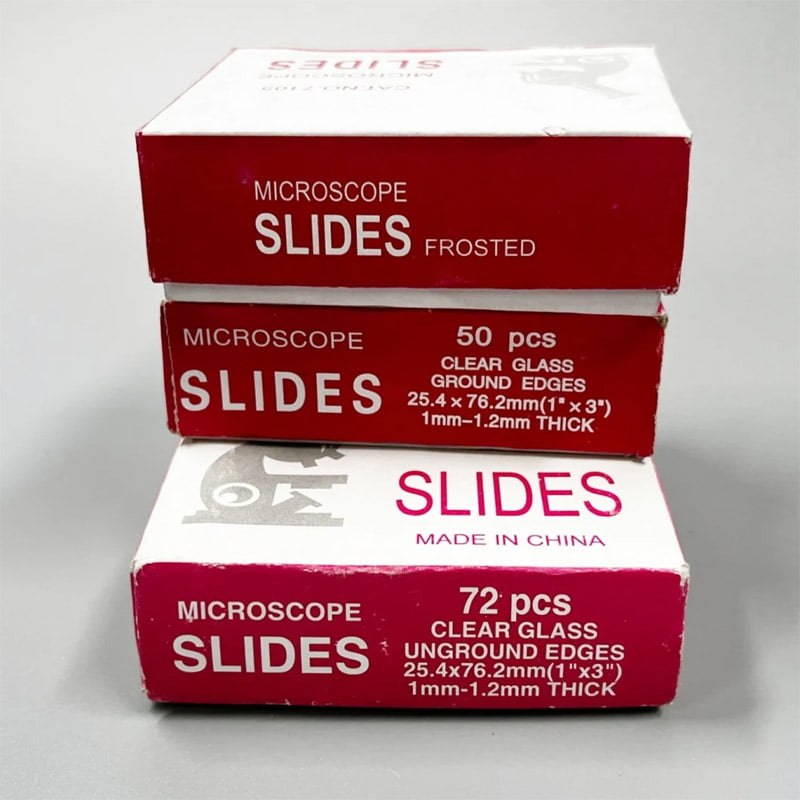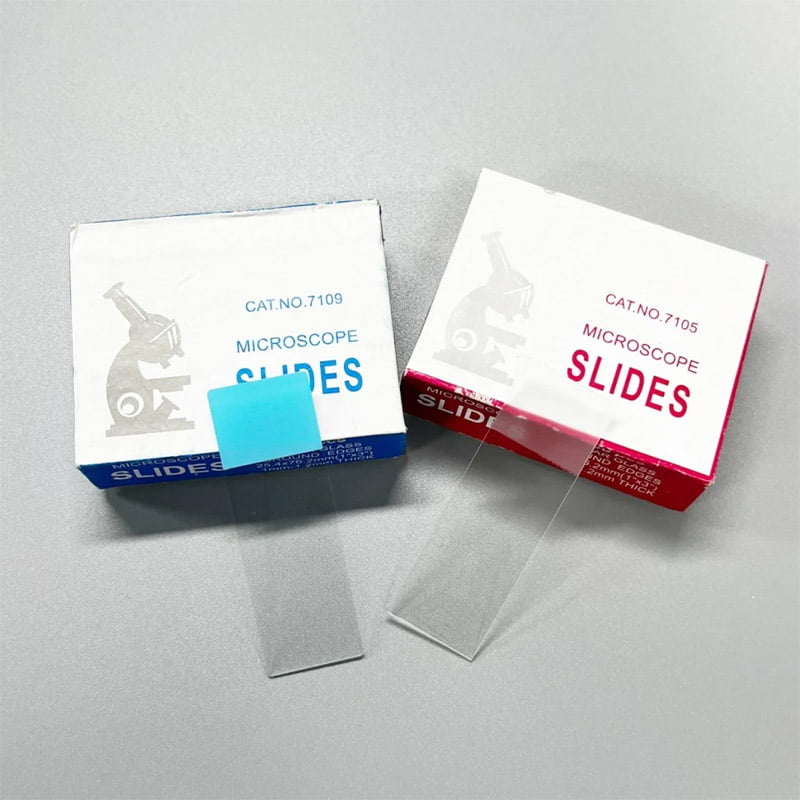| Product Name | Microscope Slide |
| Main Material | Float Glass |
| OEM/ODM | Yes |
| Certificate | CE, ISO13485,ISO9001 |
| Usage | Laboratory |
| Sterile | EO sterilization |
| Sample | Free |
| Service | In the groups we serve: distributors, import traders, government procurement, buying agents, and medical chain stores, we provide one-stop procurement for you to simplify your procurement process. |
Frosted end microscope slides feature a textured frosted area on one or both ends, allowing easy labeling with pencils or markers. Made from high-quality glass, they are ideal for specimen identification in clinical, research, and educational labs.
| Code | Description | Corner | Measures |
| 7101/7101F | Ground Edges | 90° / 45° | 1″ x 3″ |
| 7105/7105F | Ground Edges Singe frosted end | 90° / 45° | 1″ x 3″ |
| 7107/7107F | Ground Edges Double frosted ends | 90° / 45° | 1″ x 3″ |
| 7102 | Cut Edges | 90° | 1″ x 3″ |
| 1/1/7105 | Cut Edges Single frosted end | 90° | 1″ x 3″ |
| 1/1/7107 | Cut Edges Double frosted ends | 90° | 1″ x 3″ |




A microscope slide is a thin, flat piece of glass, typically measuring 75 by 25 mm (3 by 1 inches) and about 1 mm thick, used to hold specimens for examination under a microscope. The specimen is usually mounted on the slide and covered with a thinner cover slip to protect it and enhance clarity during observation. Microscope slides facilitate quick insertion and removal from the microscope, making them essential tools in laboratories for biological research, medical diagnostics, and educational purposes.
Medical Consumables Manufacturer Established 2003
High-end equipment, professional team, first-class service
Sinymedical helps you simplify the process from import to sale.
Let your medical consumables become high-quality products.
Copyright © 2025 | Ningbo Siny Medical Technology Co., Ltd
Copyright © 2025 | Ningbo Siny Medical Technology Co., Ltd
